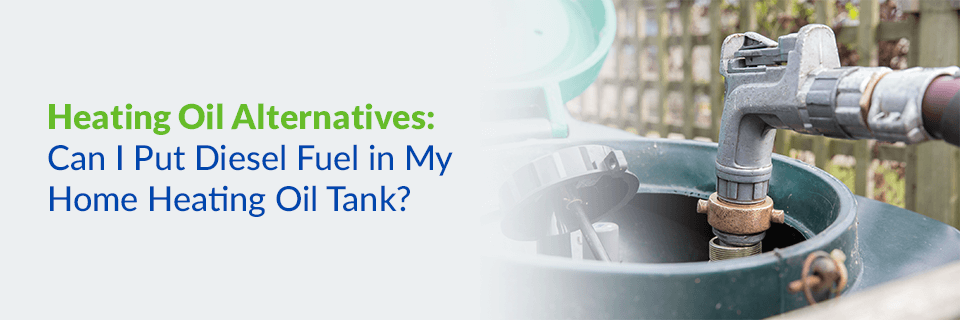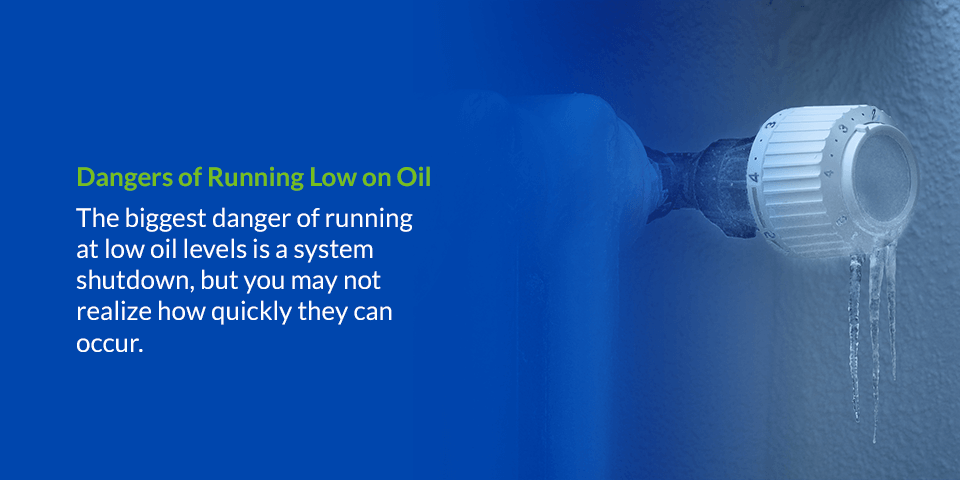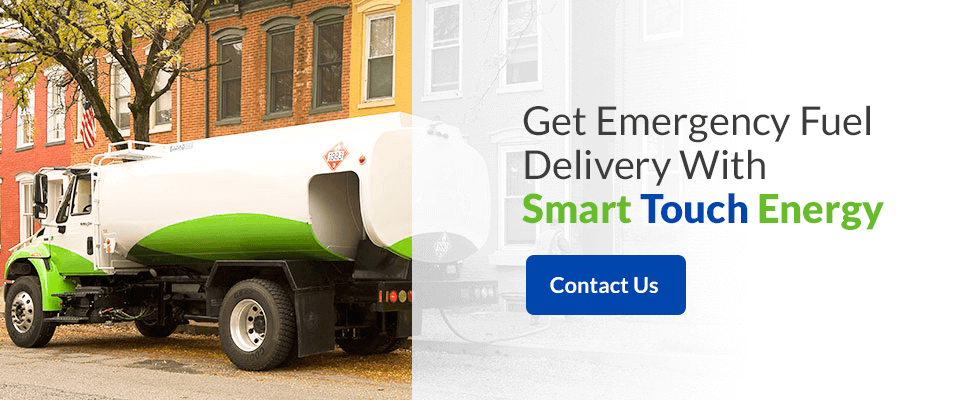
Living in the Northeast, cold winters are another day in paradise for us. However, even the most seasoned Northeasterners are prone to temporary setbacks. Perhaps the one we all hope to avoid the most is running out of fuel for our home heating oil tanks. Luckily, standard turnaround times allow for heating oil delivery within three business days — but you can get service as fast as same-day delivery from local oil distributors.
- Inspect Your Home Heating Oil Tank
- Dangers of Running Low on Oil
- Diesel as a Heating Fuel Alternative: Safety and Uses
- How to Use Diesel Fuel in Your Home Heating Oil Tank
- Get Emergency Fuel Delivery With Smart Touch Energy
But with unpredictable weather storms and families at home, sometimes you just can’t wait. For those times, diesel fuel might be the alternative you’re looking for to keep your home heated, but diesel isn’t as simple as fill-and-go. Here is a comprehensive guide of everything you need to know before putting diesel into your home heating oil tank.
Inspect Your Home Heating Oil Tank
One of the biggest drawbacks of diesel is that it is taxed differently than heating oil, so it tends to be more expensive. It’s important to make sure you actually need an oil alternative by inspecting your oil tank before making the temporary switch.
The most common way to check the level of oil in your home oil system is to inspect the floating gauge. This gauge floats on the oil, indicating how full (or empty) your tank is. To ensure the accuracy of your float, remove the plastic cover around it and push it down with your hand. If your tank contains oil, the gauge will return to its original position at the proper oil level. If it remains down, your tank is out of oil.
You can also manually check your oil level by placing a yardstick down the fill tube of the tank. Each tank, depending on the size, will have a different critical level of when to add fuel. Verify the critical level for your tank with your tank manufacturer. We recommend ordering new oil whenever your tank reaches below one-quarter full.
If you are out of oil, you’ll want to continue with the process of filling your tank with diesel. Otherwise, let the sediment reach the bottom of the tank and reset your burner to start it up. In some cases, bleeding the lines to release air caught in the system may be necessary to help the tank restart. That process is messy and very involved, so we recommend seeking help from a professional if you choose this route.
Dangers of Running Low on Oil
The biggest danger of running at low oil levels is a system shutdown, but you may not realize how quickly they can occur. With most tanks, your system will shut down at a critical level before you fully run out of heating oil.

A shutdown can occur for many reasons, with one being sediment buildup in the bottom of the tank. Sediment accumulation can be a more prevalent problem for tanks that haven’t been appropriately cleaned.
Additionally, many tanks have feed lines that run from the top of the tank downward. If these pipes don’t reach the bottom, you may be out of fuel before your tank is fully emptied.
Diesel as a Heating Fuel Alternative: Safety and Uses
Now that you know for sure your tank is either out of heating oil or is at least below critical levels, it's time to start using diesel. Diesel is a great fuel option for heating but should only be used as a temporary solution. Heating oil is always the better option, and here's why.
Aside from the higher price, diesel burns hotter than traditional heating fuel. This isn’t a major issue when used in short-term increments (a few days at a time), but over time it can cause lasting damage to your heating system that isn’t designed to withstand higher temperatures. Using 5-10 gallons of diesel fuel daily for only a couple of days should preserve your tank’s longevity.
The total amount of diesel you use will depend on how long it'll be until you can get a heating fuel delivery. At most, you should need no more than 10 gallons a day.
When handling diesel, be sure to keep it in properly colored containers — yellow is used for diesel — and label it. Although this is a temporary fix, it is safe to store diesel fuel for six months at a time before it degrades and becomes unsafe. Additives are available to prolong the life of diesel, but those come with limitations and required treatments, so it's still advised not to store diesel too long.
If you don’t have any other uses for your diesel fuel after using it in your heating oil tank, you may need to contact your local municipality for proper diesel disposal via recycling centers or hazardous waste collection centers.
How to Use Diesel Fuel in Your Home Heating Oil Tank
After you have picked up your diesel in your properly marked yellow containers, it’s time to start filling up your tank.
- Turn the tank off: The first step is to ensure your tank is fully off. You can do this with the tank’s thermostat control.
- Add the fuel: After the tank is off, add up to 10 gallons (or as much as needed) of the diesel into the tank. It is okay to mix the leftover fuel with the diesel — doing this is better, because having residual heating oil indicates you didn’t run the tank fully dry. If you did run the tank fully dry, you may need to bleed the lines of air and ensure the filter, nozzle and oil pump are clear of sludge. If you are not mechanically inclined to do this on your own, catching this problem before your tank runs dry will save you time and extra steps.
- Wait for the settling: Let the tank sit for 10 minutes after being filled to allow all sediments and impurities to settle to the bottom.
- Turn the tank back on: Restart your heating system. Now, your home will be heated as normal until you can switch back to heating oil.
Get Emergency Fuel Delivery With Smart Touch Energy
If your tank is low and you don't have heating oil alternatives on hand, rely on Smart Touch Energy. Smart Touch Energy proudly serves the Northeast with emergency oil services, saving homeowners from running out of oil when they need it most. Request emergency oil services from us if you need a quick solution. Our emergency oil deliveries can typically service your home in 24 hours or fewer, ensuring you won’t have to rely on diesel to heat your home longer than you have to.
To prevent future tank empties and get a discounted rate on fuel, consider automatic fill services to keep your tank full and your maintenance needs low.






